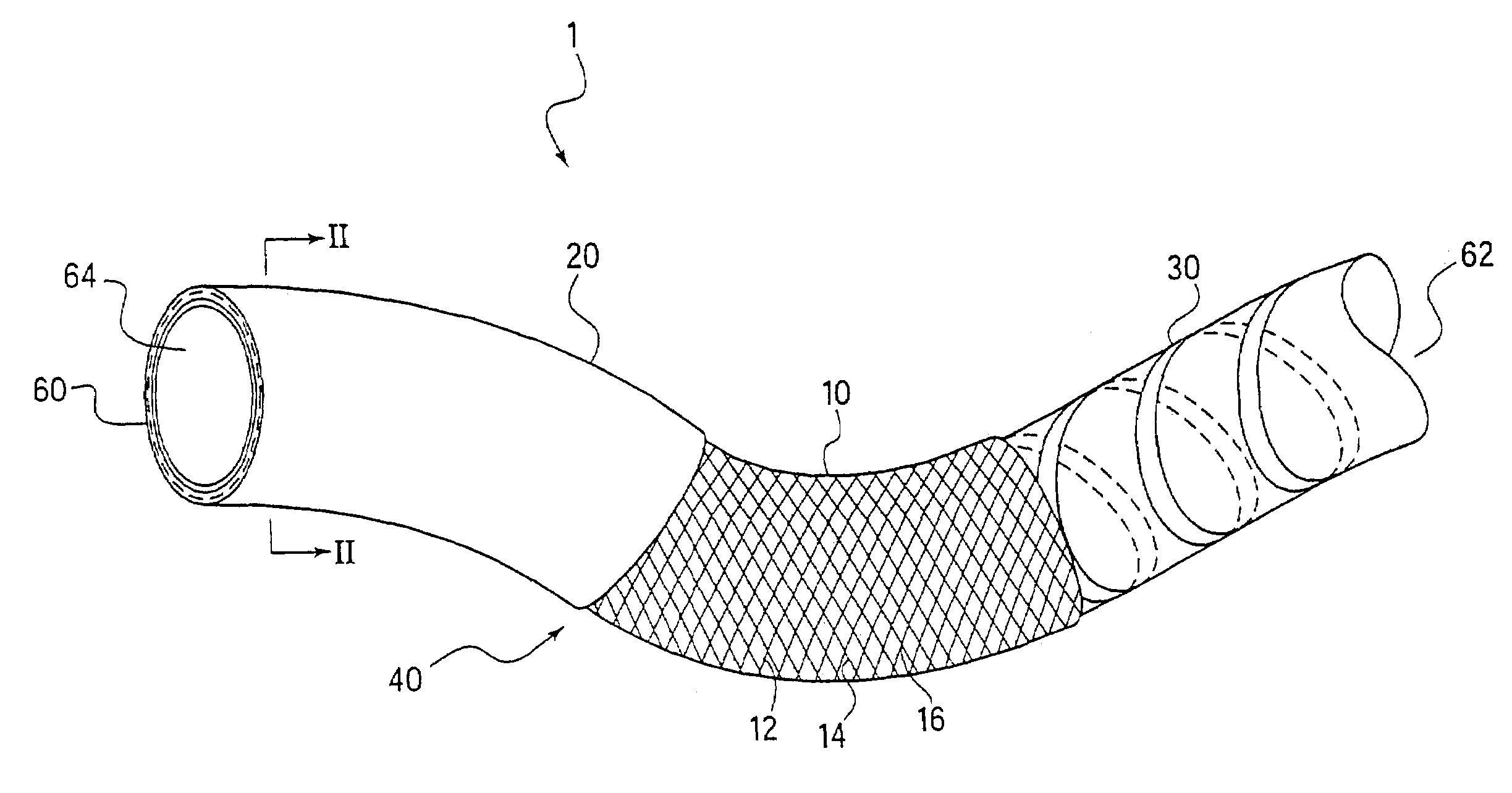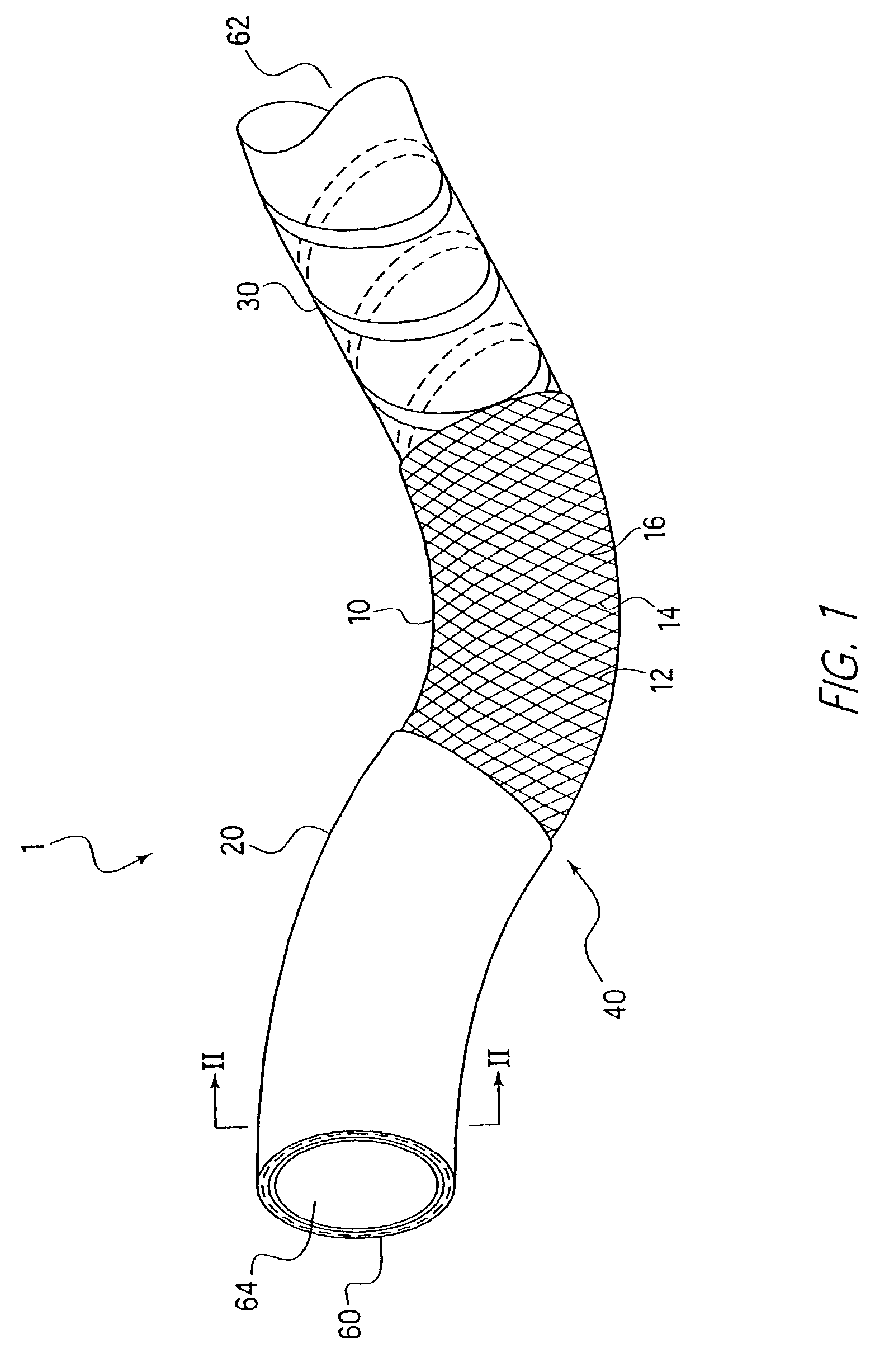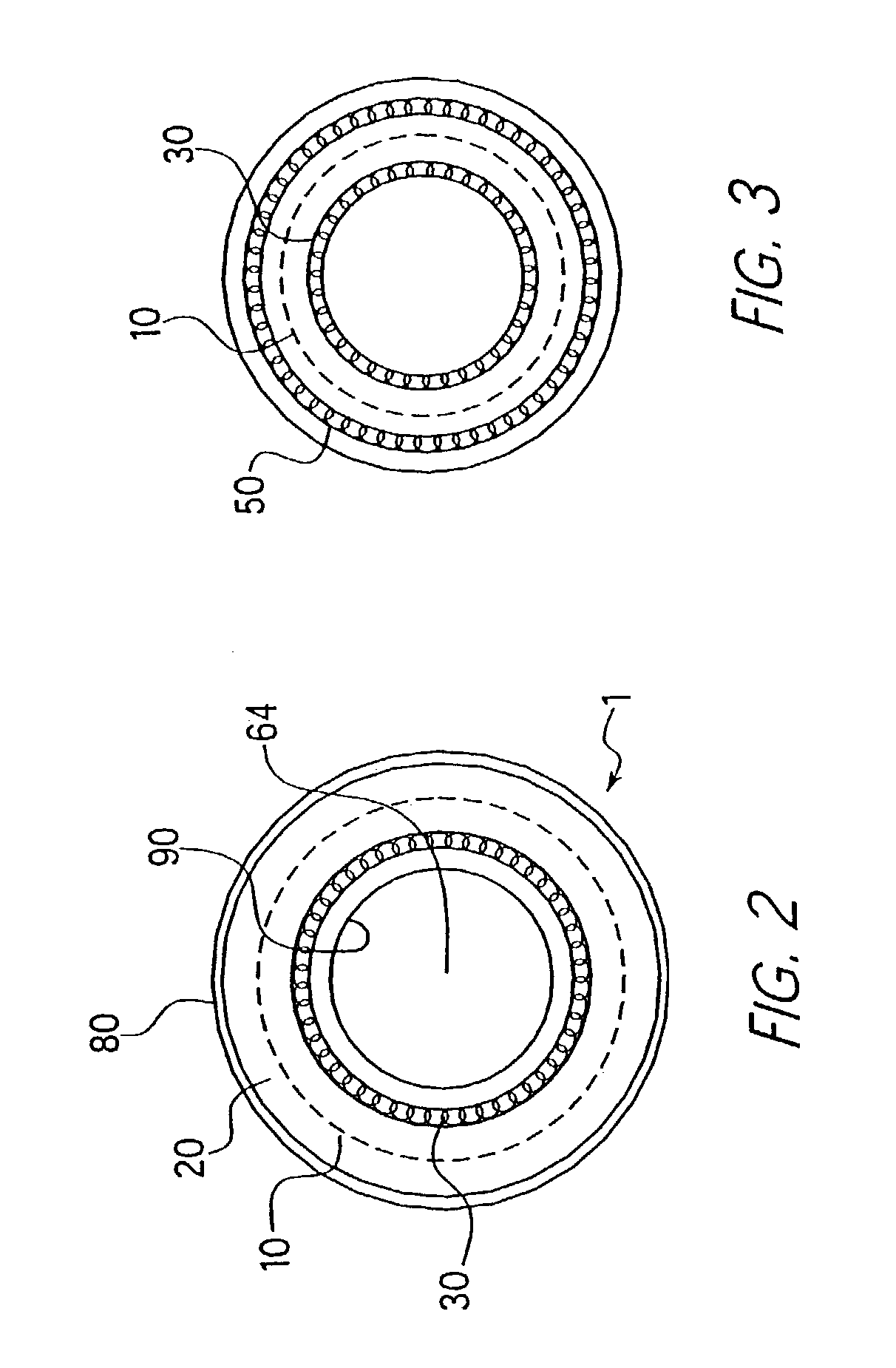Composite flexible tube for medical applications
a flexible tube and medical technology, applied in the direction of catheters, coatings, etc., can solve the problems of increasing the bending stiffness reducing the service life of the current tube, so as to reduce the relative movement of the wire elements
- Summary
- Abstract
- Description
- Claims
- Application Information
AI Technical Summary
Benefits of technology
Problems solved by technology
Method used
Image
Examples
Embodiment Construction
[0020]Medical tubes used in endoscopes and in similar devices have to be as flexible as possible, while meeting certain structural requirements, and retaining a wall that is as thin as possible. These sometimes contradictory requirements can be met by forming the tube from separate structures that cooperate together to give the tube its desired properties. These tubes are referred to as composite tubes.
[0021]FIG. 1 shows a composite tube 1, that is formed by combining a braid 10, an elastomeric layer 20, and a coil 30. As will be explained later, the braid 10 is preferably fully embedded in the elastomeric material 20. The coil 30, on the other hand, can be fully or partially embedded in elastomeric material 20, or can be a free coil placed adjacent to the braid 10. The combination of braid 10 embedded in elastomeric material 20 forms a composite element 40.
[0022]Braid 10 is used principally to form a structural frame for the tube, and to transmit a torque along the length of tube 1...
PUM
 Login to View More
Login to View More Abstract
Description
Claims
Application Information
 Login to View More
Login to View More - R&D
- Intellectual Property
- Life Sciences
- Materials
- Tech Scout
- Unparalleled Data Quality
- Higher Quality Content
- 60% Fewer Hallucinations
Browse by: Latest US Patents, China's latest patents, Technical Efficacy Thesaurus, Application Domain, Technology Topic, Popular Technical Reports.
© 2025 PatSnap. All rights reserved.Legal|Privacy policy|Modern Slavery Act Transparency Statement|Sitemap|About US| Contact US: help@patsnap.com



